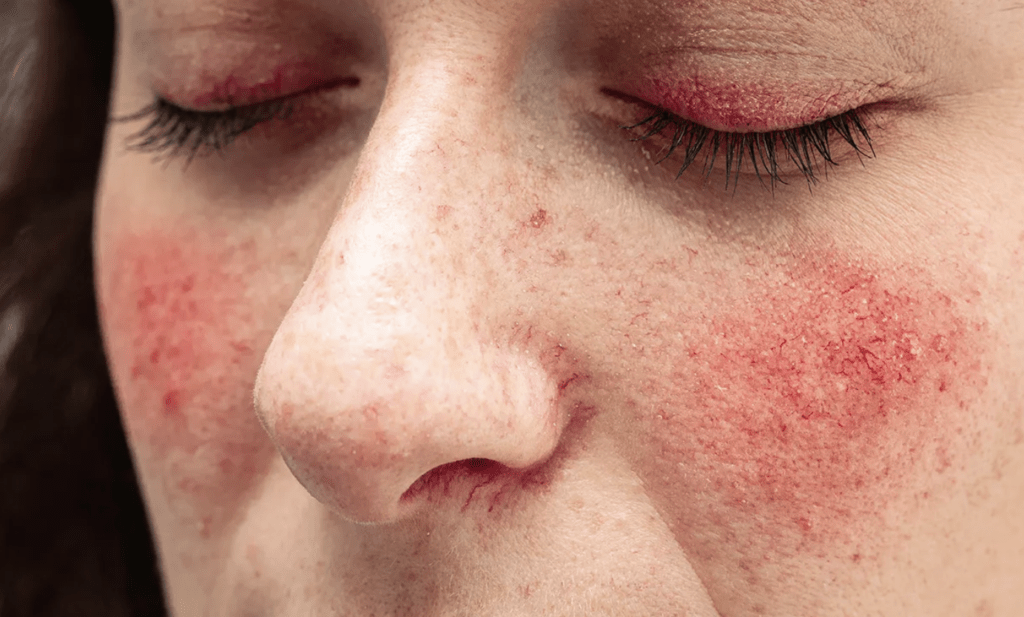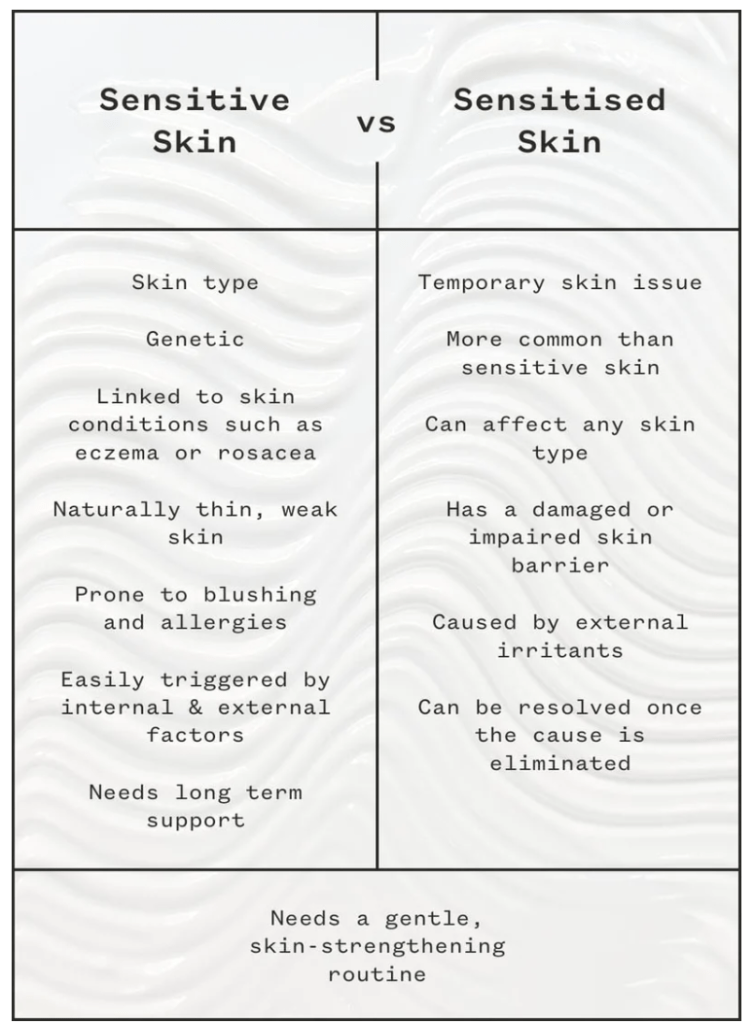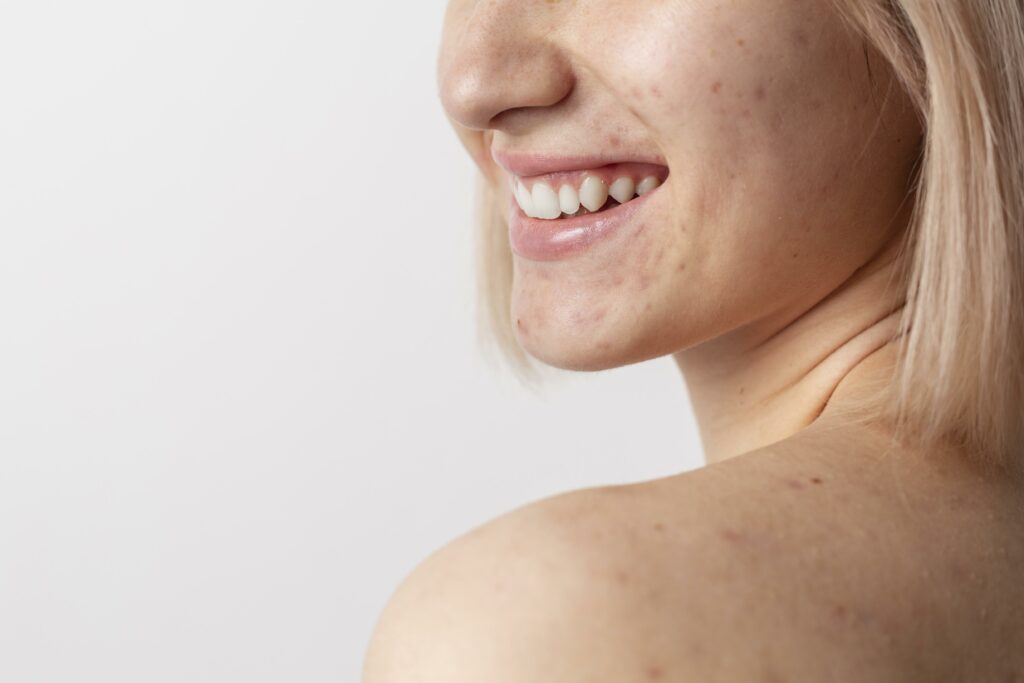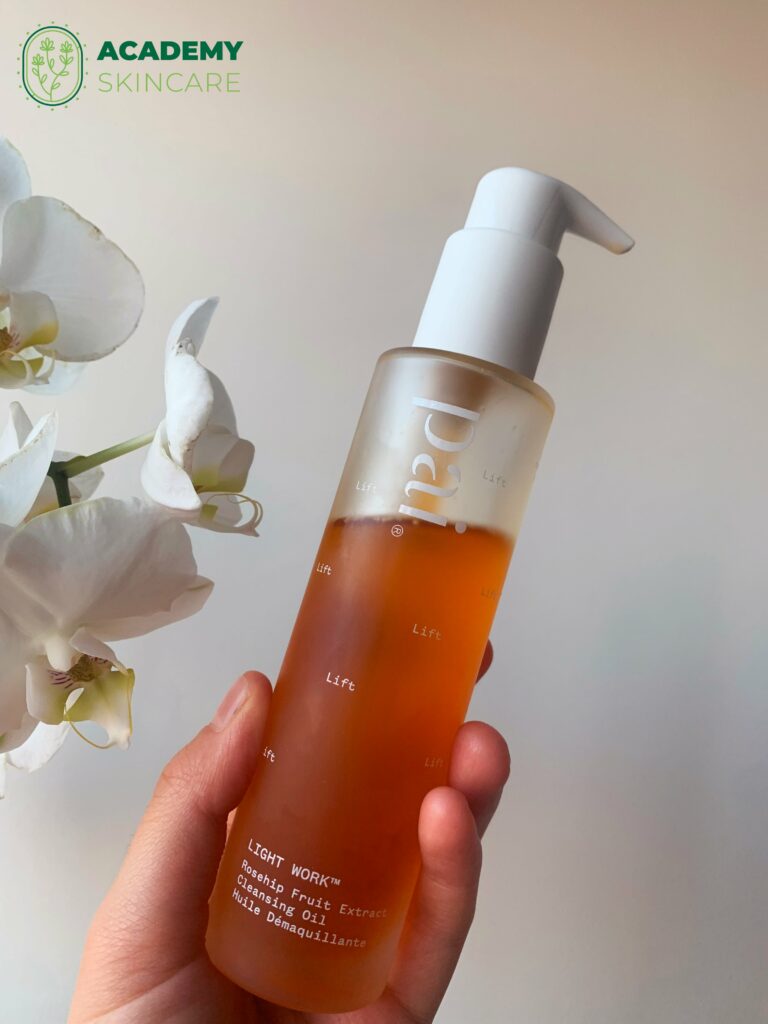Introducing you to all Sensitive Skin Types – Everything you Need to Know
Last Updated on January 18, 2023 by Aysenur Yashar
How do you define your skin? Think for a second. Is it sometimes a sensitive skin but not so sensitive, like you have occasional tightness, itching and breakouts from new products? If you are facing similar questions, you are in the right place to learn everything about the sensitive skin types and classifications!
So there is more than one type of sensitive skin? Let’s look at examples, we can all relate!
Sometimes your cheeks would flush because you were eating something or you applied a different product? Or you really have a dermatologically diagnosed skin condition? Or you were in a polluted city and now you are breaking out?
It can get really really complicated and really frustrating! Because these are all types of sensitive skin, there is no right or wrong answer!

Because it is complicated and it is the human body and I am a medical student, I decided to do what I do best – hit the library and the textbooks to learn what actually sensitive skin is.
For quick answers and worries for sensitive skin types you can read the two paragraphs below! For more nerdy details just keep reading! 🙂
What does Sensitive Skin mean in the first place?
Sensitive skin is a heightened subjective reaction of the skin to environmental triggers. Individuals would report exaggerated and unpleasant reaction of their skin when it contacts various cosmetic products, sunscreens and soaps. Sensations such as itching, burning, stinging and tightness can be reported.
Usually these findings remain subjective and have no objective counterparts which makes the approach to sensitive skin difficult both from the medical community but also from the cosmetic industry as well.
In fact, dermatologists are usually left with dealing an “invisible dermatosis” with no signs of irritation or inflammation.
(dermatosis = noun, disease of the skin without inflammation)
What triggers sensitivity and the different sensitive skin types?
Now that we covered the basics of sensitive skin, let’s look into what are the causes of various sensitive skin types. Sensitive skin is really complicated, as you can guess till now, both for physicians and scientists and ourselves as well. It is fair to say that genes do play a role in making someone susceptible to having a sensitive skin or different types of sensitive skin. When the right environmental and outside trigger comes, woala, we have ourselves a sensitive skin!
Chemical triggers for sensitive skin types from cosmetic products
Although cosmetic products claim to be tested on sensitive skins and show no irritation, some of the chemicals inside might not be the friendliest for sensitive skins. Some of the chemicals include:
- alcohol
- propyleneglycol
- butylene glycol
- cocamidopropylbetaine
- triethanolamine
- AHA
- resorcine
Just a word about resorcin and AHA’s they are contained mainly in exfoliators. They can be very unfriendly to more sensitive skin types. They may create an irritation after a repeated application onto the fragile parts of our skin. The repeated application can lead to cumulative irritation.
Environmental factors that trigger sensitive skin irritation
Have you gotten breakouts after tanning? Please tell me it is not just me! Our skin is in continuous interaction with the surrounding environment. So it only makes sense that an irritant in the air might just as well be an irritant to our sensitive skin. Let’s review the triggers then:
- sunburn, UVA exposure
- cold, sun, wind, heat
- pollution
- phototherapies
- cosmetic procedures
You can even scroll below to read that there is an environmental sensitive skin type. Ahaha it is so common they needed a new classification for it!
Other potential irritants
Some of the foods that we eat can trigger a sudden redness to our cheeks and face for a short period of time. This is mostly seen in people with a more specific type of sensitive skin. Read on to discover more on the sensitive skin types, but here are some common foods that can cause irritation:
- spices
- alcohol
- coffee
- hot beverages

How do health care workers classify sensitive skin types?
In medicine we love to classify everything and when I say everything I really mean it.
So let’s cover the medical classification of skin sensitivity. We refer to this as clinical forms. After looking into the literature, really intelligent scientists and doctors have classified sensitive skin different ways. I chose the one that made more sense to me but feel free to comment and I can share more of the classifications.
If you are not interested in how doctors classify sensitive skin, scroll below to read a more daily life applicable sensitive skin approach! So here is how literature classifies sensitive skin:
Very Sensitive Skin
Individuals with this skin type can have a dry or oily skin. They usually react too much to both cosmetic products and environmental triggers. Some psychological stressors can also trigger those irritations.
Environmentally Sensitive Skin
People with this skin type usually have dry, clear and thin skin. As you can guess, they are more sensitive to environmental triggers such as heat, rapid temperature changes, cold and more. These individuals can also experience red flushing on their cheeks.
Cosmetically Sensitive Skin
People with this kind of sensitivity are reactive only to some cosmetic products, not all of them. Their reaction is also much lighter.
Enough with geeky facts let’s get to the juicy part!

What is an easier way to classify Sensitive Skin Types?
I mentioned above that, whilst doing my research for the blog I learnt about 3-4 different ways of classifying sensitive skin but I wanted to include one classification taken out from a cosmetic dermatology textbook.
Why because the upper classification is great to distinguish sensitive skin if you are a scientist and a dermatologist or any kind of physician actually. For the sake of understanding what skincare and cosmetics we need to chose, well we need an easier classification. The one easiest to understand and apply immediately to our daily lives was The Baumann Skin Typing System.
It is fairly simply and easy to understand and let’s dive right into it.
Easy to understand sensitive skin classification system
The Baumann Skin typing system divides sensitive skin into four categories based on diagnosis and what kind of reaction
Type 1 Sensitive Skin

This skin type is prone to developing comedones and acne. Comedones are basically what dermatologists use to describe blackheads or whiteheads. We can also observe papules and pustules here as well. This subtype was termed as “acne cosmetica” in the 1972’s and can be triggered by various ingredients found in skincare and haircare. Some of the trigger ingredients may be coconut oil and propyl myristate.
Some red dyes found in cosmetic make up products such as blushes and lipstics can also trigger acne formations.
Type 2 Sensitive Skin
This skin type is defined as facial flushing and redness because of some spicy food, heat, emotion or vasodilation. Individuals in this category are prone to developing rosacea, which a chronic inflammatory condition defined by lots of red facial flushing.
If you have been noticing some unnecessary facial flashings and redness, it is worth looking inwards, I mean your gut here. Here is a quick read to find out the connection between your gut and rosacea!

If your cheeks are turning this much red it is unlikely due to you talking to your crush for a long time, you might have rosacea- prone sensitive skin! Please, consult your dermatologist for most professional opinion!
Type 3 Sensitive Skin
This skin type is prone to itching, stinging and burning of any cause. These irritation can happen after exposure to certain environmental triggers or upon application of skin care products.
The environmental triggers can be wind, heat and/or the cold. Usually we do not expect to see flushing in those individuals.
Type 4 Sensitive Skin
If you have this skin type you have most likely experienced redness, irritation and scaling due to allergens and irritants.
People suffering from contact dermatitis and irritant dermatitis fall into this category. These individuals show hypersensitive reactions to components which usually should not cause irritation. It is believed that it is the impaired barrier function which is responsible for this.
If you are noticing any patterns of such irritation please contact your dermatologist immediately!
We covered the four types of Sensitive Skin according to the Baumann Scale which you can find more about here and you can even do the test there! It is always better to know more about your skin type!
Now that we covered that I want to touch upon sensitive skin versus sensitised skin!
What is the difference between Sensitive and Sensitised Skin?
Do you know the difference between a sensitive skin and a sensitised one?
If I have to be honest with you, I did not know what the difference between sensitive and sensitised skin was until I was doing my research for my Pai Skincare blog post (click here for a quick read).
To break it down simply having a sensitive skin is a skin type and having a sensitised skin is a skin condition. So what does this mean? A skin condition is a transient situation and a skin type is how your skin usually is. Most of us, including myself, define any kind of irritation, dryness or dehydration as sensitive skin but sensitive skin actually are skin types that are prone to skin “diseases” like urticaria and eczema.
Sensitive skin is defined mostly by our genes and the environment. As we discussed above, the upper layer of the skin functions as a barrier and when there is a defect there, chemicals that usually are harmless can become irritative.
Sensitised skin, on the other, hand is mostly caused by an irritant and if you remove it, then your skin is most likely going to calm down.

Why defining sensitive skin is tricky?
Defining sensitive skin from a medical stand point and the academia actually is a little tricky. The diagnosis of sensitive skin is primarily based on self-reported hypersensitivity and usually there are no objective findings suggesting that hyper sensitivity.
The upper mentioned adverse reactions such as itching, burning, stinging can also come with occasional redness and even greater amounts of whiteheads and blackheads. These are all complaints that can accompany other dermatologic conditions.
Another point is, these skin irritation can vary greatly due to gender, ethnicity, skin dryness, environmental factors and many more. Wooh I never guessed it could be this hard to specify sensitive skin.

Another handicap of identifying sensitive skin is testing, designing studies and finding the proper target population. Proper target population simply means picking the people with the appropriate characteristics to participate in a scientific study. In our case it would mean picking people with sensitive skin to participate in a study investigating the details of that skin type.
We already clarified that people that identify as having a sensitive skin do not show the visible signs of irritation. To make it more complicated, people that identify as having a non-sensitive skin show visible signs or irritations!
Because this was not complicated enough, the irritability varies from one part of your body to another. In one study the hyper-sensitivity of right and left arm, at the same point, varied in 47% of tested individuals.
Enough with the details, what is the takeaway message?
Actually the resources on sensitive skin go on and on why identifying this condition is hard. One takeaway message from here is that defining sensitive skin objectively is very complicated and difficult. To this day its’ definition mainly relies on self reported hypersensitivity.

Sensitive skin has also been described as Sensitive Skin Syndrome. Individuals have the subjective feeling of having a sensitive skin with itches and tightness but once they go to the dermatologist, no objective sensitive skin findings can be seen.
Now we are going to get a little geeky, because I really want you to understand the logic behind it. In the end if you have sensitive skin and it is actively making you unhappy, it is worth knowing what is actually happening with your skin!
If you are not interested skip to the Sensitive Skin Types!
What causes sensitive skin?
There are numerous hypothesis on why dermatologists, the cosmetic industry and you, yourself, might be experiencing sensitive skin. So let’s dive right into it!
Research on the topic of sensitive skin shows that this hyper-reaction may be due to a thinner stratum corneum in those individuals. Okey, no panic, stratum corneum is the uppermost layer of our skin that has contact with the environment. If the SC (short of Stratum Corneum) is thinner than usual then water soluble chemicals can more easily pass through and create an inflammation which in itself could result in the unpleasant sensations reported by those individuals.
So this means that with a thin SC we are likely to see an impaired barrier function of our skin. A very helpful marker in science to show that skins’ barrier might be damaged is called TEWL – Trans Epidermal Water Loss. One author even considered TEWL as the best measurement for sensitive skin and damaged skin barrier.
In the same study, the author also found that a high baseline of TEWL correlated with sensitive skin. Wow this is really cool!
But research suggests that there might be additional factors that play a role here such as changes in the delicate nerves on our skin. In one study the authors found that, individuals who reported having a sensitive skin also had a higher content of nerve growth in SC.
It is likely that the more nerves we have in the epidermis the more sensitive we are towards environmental triggers.
Management of Sensitive Skin Types
I am not a sensitive skin expert (yet) but I found some tips from someone who might be better than me. I read a paper on sensitive skin and luckily the author lists some simple tips and tricks that you can easily integrate into your lifestyle and skin care immediately. So let’s see them!
- Avoid aggressive exfoliating masks
- Protect skin from temperature changes, heat, wind and the cold
- If any cosmetic product causes discomfort stop using immediately
- Use fragrance free formulas
- Observe if skin is more irritable after drinking coffee or intaking spices
- Avoid or apply cautiously products that contain AHA, tretinoin and retinaldehyde
- Be aware that recurrences can happen
Skincare Brand Recommendation
You probably already know which lovely natural and 100% clean skincare brand I am going to recommend – It’s the one and only, Pai Skincare.
Pai Skincare is a brand designed for sensitive and sensitised skin. In order to achieve this, they avoid toxic chemicals, fragrances and other aggressive and abrasive chemicals. Moreover, every single product gets tested on sensitive skin before getting released into the marker.
The founder, Sarah, herself has struggled with severe urticaria and sensitive skin. I guess she would be sensitive skin type 4, haha, just a wild guess! But her story really shapes the whole idea and vision behind the brand!
The most beloved ingredient that they love using is Rosehip Oil! Hooray, what makes this plant oil really suitable for sensitive skin then? It is very hydrating, contains lots of different vitamins and nutrients and it is really suitable for all skin types actually! So for more cool details of why Rosehip Oil is important, read the blog heis really suitable for all skin typesre!
My recommended products for all sensitive skin types and sensitised
The products I would highly recommend are the Middlemist Seven Camellia and Rose Gentle Cream Cleanser by Pai Skincare and Rosehip Fruit Extract Light Work Cleansing Oil. You can see a little snapshot of those lovely products below.
The active ingredients of both products are tested on sensitive skin and are made for sensitive skin types and sensitised skin. For more details on why they work magic, you can read here!

Thank you for reading and I hope this helped you figure out your skin better!
Resources:
- Yokota, T., Matsumoto, M., Sakamaki, T. et al . Classification of sensitive skin and development of a treatment system appropriate for each group. IFSCC Magazine. 6, 303– 307 (2003).
- Berardesca, E., Farage, M. and Maibach, H. (2013), Sensitive skin: an overview. Int J Cosmet Sci, 35: 2-8. https://doi.org/10.1111/j.1468-2494.2012.00754.x
- Lev-Tov H, Maibach HI. The sensitive skin syndrome. Indian J Dermatol. 2012 Nov;57(6):419-23. doi: 10.4103/0019-5154.103059. PMID: 23248357; PMCID: PMC3519246.
- Farage, M.A., Katsarou, A. and Maibach, H.I. (2006), Sensory, clinical and physiological factors in sensitive skin: a review. Contact Dermatitis, 55: 1-14. https://doi.org/10.1111/j.0105-1873.2006.00886.x
- Lee, C.H. and Maibach, H.I. (1995), The sodium lauryl sulfate model: an overview. Contact Dermatitis, 33: 1-7. https://doi.org/10.1111/j.1600-0536.1995.tb00438.x
- Pons‐Guiraud, A. (2004). Sensitive skin: a complex and multifactorial syndrome. Journal of cosmetic dermatology , 3 (3), 145-148.
- Coverly J, Peters L, Whittle E, Basketter D A. Susceptibility to skin stinging, non-immunologic contact urticaria and acute skin irritation; is there a relationship? Contact Dermatitis 1998: 38: 90–95.
- Leslie Baumann – Cosmetic dermatology – Principles and Practice, Second Edition, McGraw Hill Professional (2009), page 94-97, Chapter 12,
- Basketter DA, Griffiths HA. A study of the relationship between susceptibility to skin stinging and skin irritation. Contact Dermatitis. 1993 Oct;29(4):185-8. doi: 10.1111/j.1600-0536.1993.tb03534.x. PMID: 8281780.





